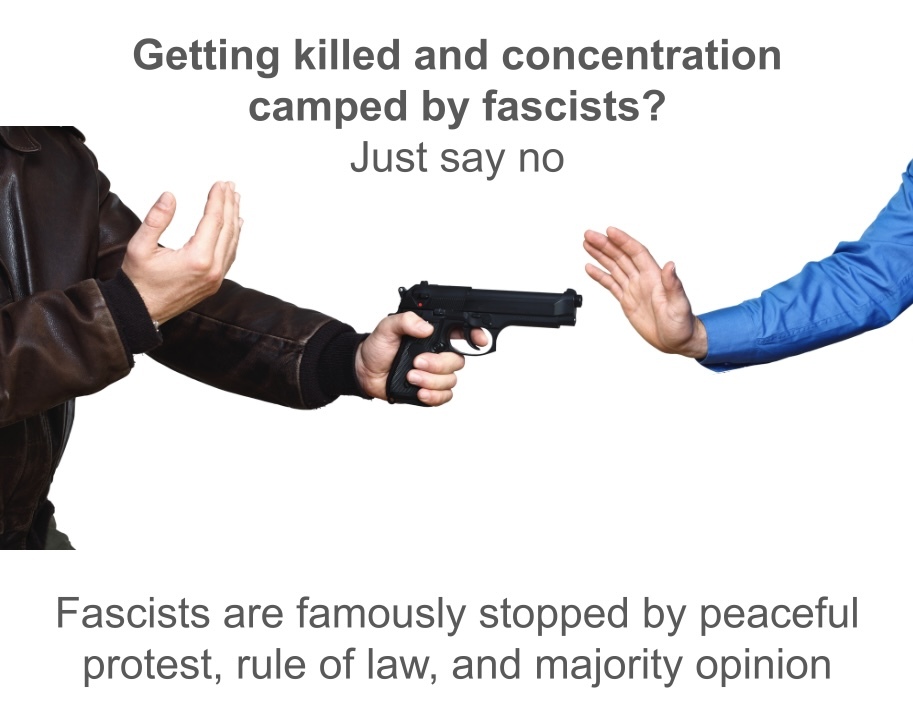this post was submitted on 17 Jun 2025
927 points (93.9% liked)
Political Memes
9296 readers
2013 users here now
Welcome to politcal memes!
These are our rules:
Be civil
Jokes are okay, but don’t intentionally harass or disturb any member of our community. Sexism, racism and bigotry are not allowed. Good faith argumentation only. No posts discouraging people to vote or shaming people for voting.
No misinformation
Don’t post any intentional misinformation. When asked by mods, provide sources for any claims you make.
Posts should be memes
Random pictures do not qualify as memes. Relevance to politics is required.
No bots, spam or self-promotion
Follow instance rules, ask for your bot to be allowed on this community.
No AI generated content.
Content posted must not be created by AI with the intent to mimic the style of existing images
founded 2 years ago
MODERATORS
you are viewing a single comment's thread
view the rest of the comments
view the rest of the comments

I keep seeing that study:
https://www.researchgate.net/publication/240678278_Why_Civil_Resistance_Works_The_Strategic_Logic_of_Nonviolent_Conflict
From what I can tell, it works backwards from a conclusion the authors already held. They excluded peaceful events that weren’t “noteworthy,” labeled protests as violent if police instigated violence, and narrowly defined success windows for violent movements while crediting peaceful ones for regime collapses that likely would have happened anyway.
Since the study was published, a wave of high-profile failures—the Arab Spring, Occupy Wall Street, BLM, etc.—has shown that the effectiveness of nonviolence has drastically diminished. Even the study’s lead author has acknowledged that modern authoritarian regimes now use digital surveillance and media control to neutralize peaceful dissent.
The study also ignores the reality that mixed-strategy movements—where one faction remains peaceful while another escalates—are often more successful, yet it frames nonviolence as the only legitimate or effective tactic.
Thank you for posting what I've wanted to convey about that study. Mixed strategy movements are the ones with true success. The civil rights movement did not succeed on MLK's back alone. Malcolm X and the Black Panthers becoming militarized is why the U.S. government started thinking about extending an olive branch. Well that and the RIOTS after Dr. MLK was assassinated by the FBI. And those riots were not "peaceful".
Thanks for the link.
A major issue with your criticism is you don't directly cite or quote anything, so we can't readily verify your claims.
A more significant issue is that we have a systematic research study with a clear design & methodology to support its conclusion. Where's the superior study to support your conclusions?
If I had to choose, then I think I'd stick with the conclusions backed by systematic research.
Held before the study? Do you think people can only write their thoughts chronologically?
The article I linked states the contrary
Where?
The article you linked states they analyzed resistance campaigns, not events.
Where? To the contrary, there's a whole section about that backfiring against the regime opposing a nonviolent movement.
How would they be able to make such claims if they label all such movements as violent?
The methodology section states their approach
Where?
Success criteria and windows for both were the same.
Do you have a proper study to support that by the same standards/methodology?
Where? How does that affect
or make violent campaigns any more effective?
Do you have studies as credible as this to support that conclusion?
Does it? The study seems to merely compare outcomes of resistance campaigns in an unopinionated fashion as stated in the design & methodology.
Your argument would improve with stronger support.